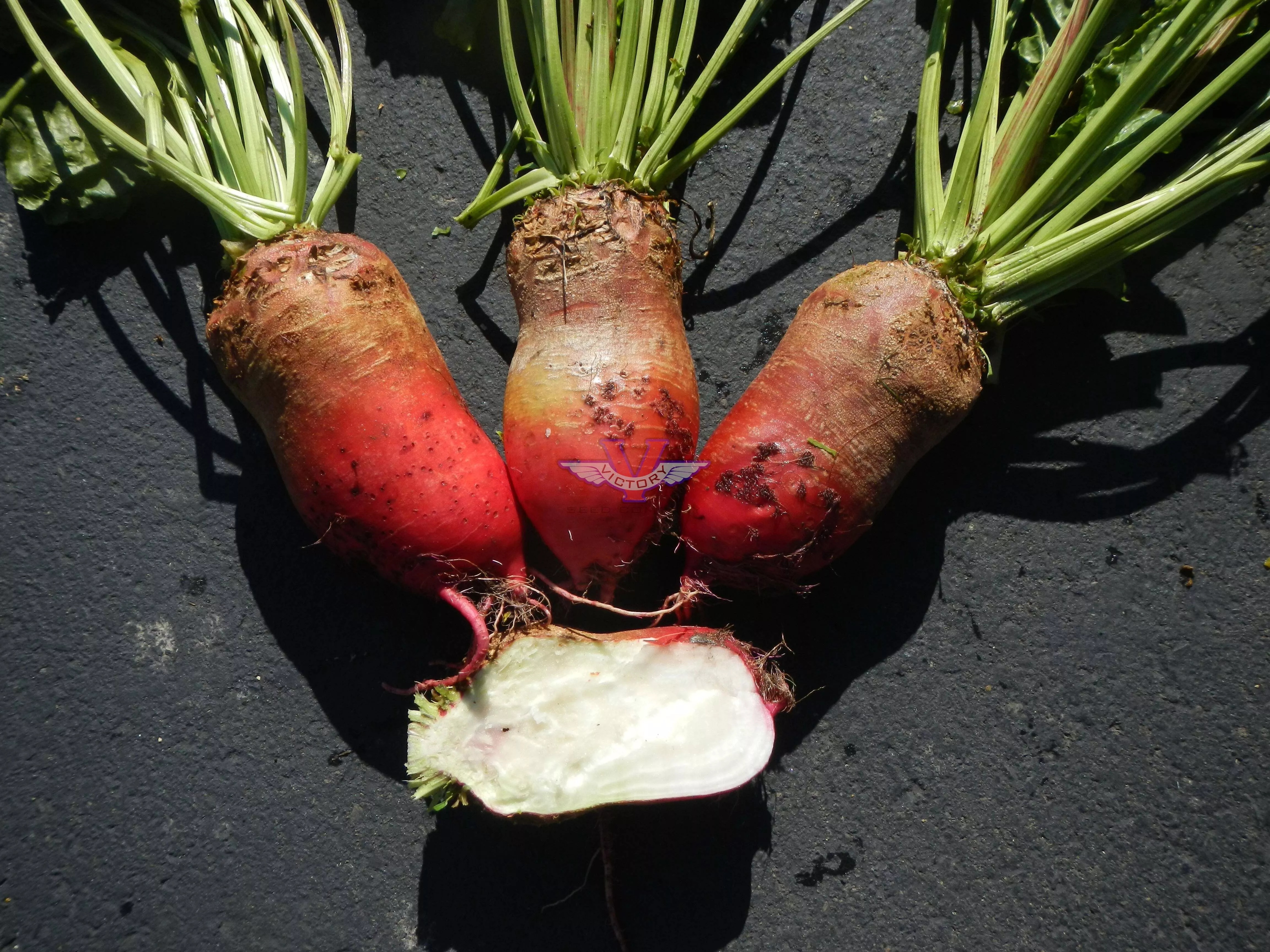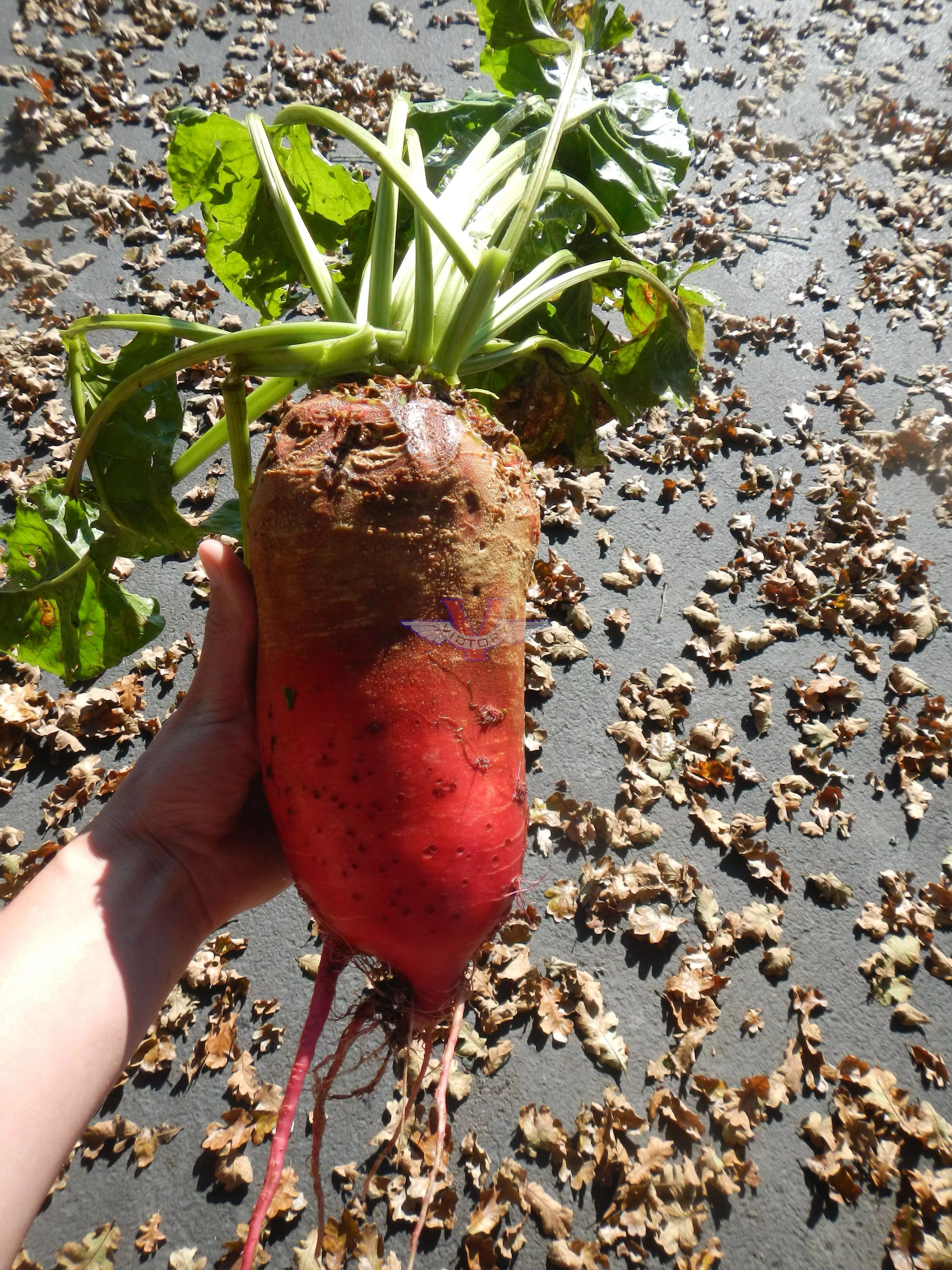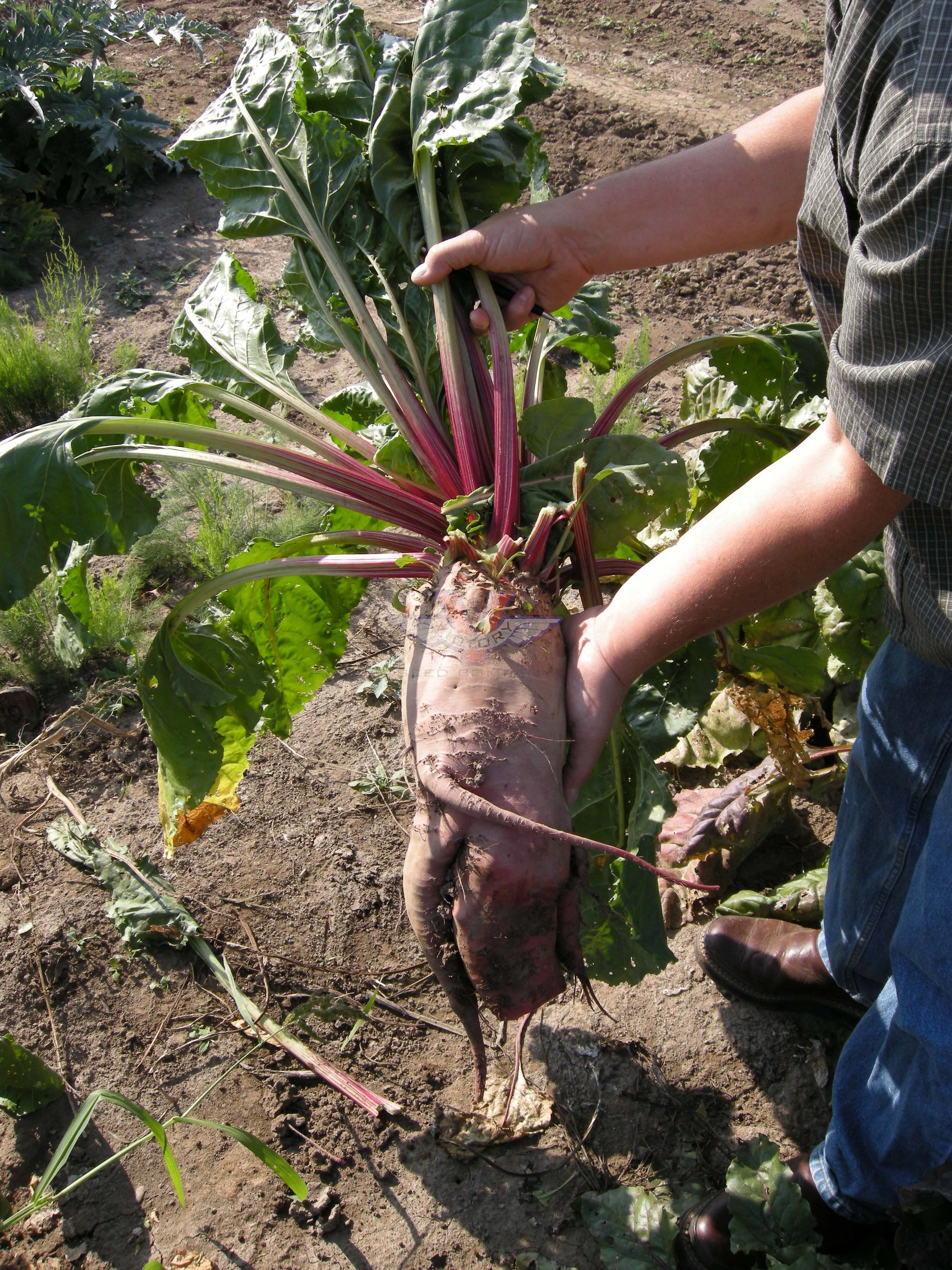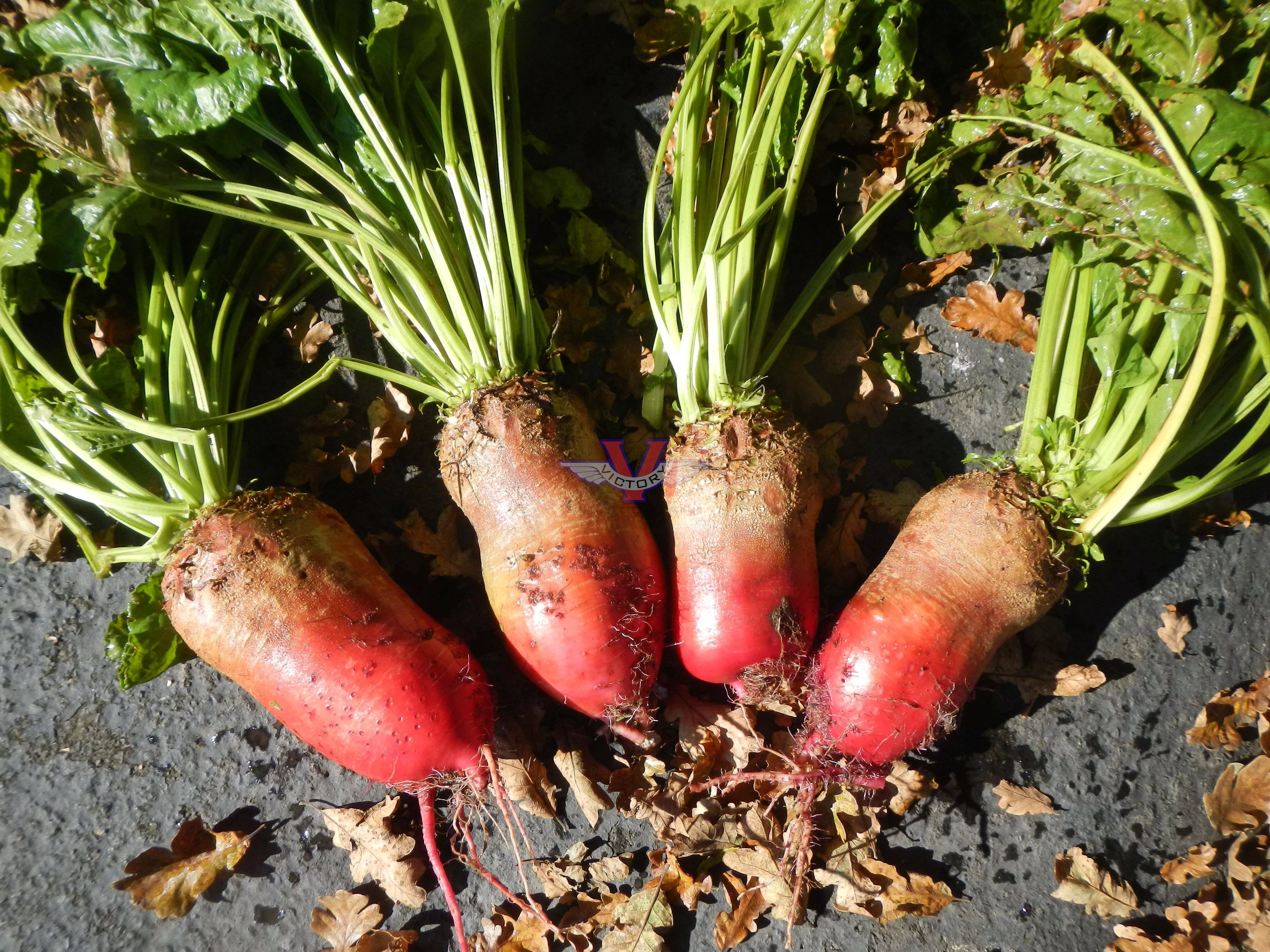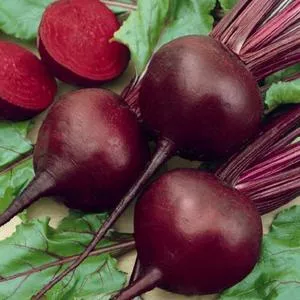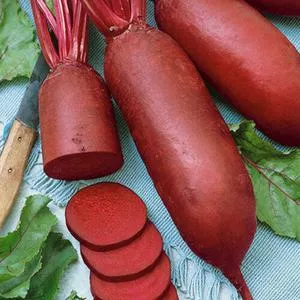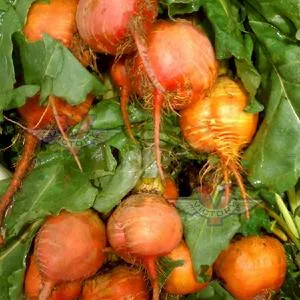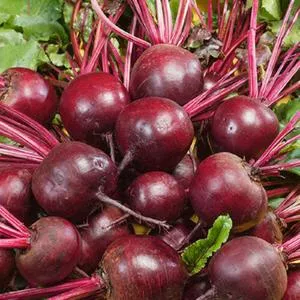



Red Mammoth Fodder Beet
Price: $3.45
SKU: 3040151And like many old-time animal feed-crops, fodder beets often found their way to their sower's table, particularly at a younger age when the roots and leaves are quite suitable for this purpose. The roots can be boiled and mashed like potatoes, or diced and stewed in sweet curries. The leaves can be lightly steamed or boiled as vegetable greens.
As described above, 'Red Mammoth' fodder beets store well and reach a very large size. The oval to spindle-shaped roots can reach twenty to twenty-five pounds each. They have a dull red color skin with white flesh and provide an excellent amount of food value per acre.
Genetic Classification: Open Pollinated
Firm the soil over the seeds and keep moist, making sure that the young roots do not dry out, until seedlings appear. When plants are 1½ to 3-inches tall, thin to three inches apart. The “thinnings” can be eaten as “baby greens.” Water weekly (or as required) in dry weather. Control weeds.
- "Les Plantes Potagères," Vilmorin-Andrieux & Cie, 1883.
- Ark of Taste.
- World Wide Words - Mangel-wurzel.
Customer Reviews:
By Paul Halvorson. on February 4, 2023
Good germination and good results when planted according to the instructions, Chicken and rabbits enjoyed the beets and the tops and so did we. It's early Feb and they are still in great shape, store well in damp sawdust or sand. The chickens like the variety they bring to their winter feed. I had some rodent damage and will install a electronic device in to counter that.
By Michael Rundquist on February 3, 2016
I planted these last spring and was amazed at the size In November. I pulled up a bunch of giant beets most measuring almost a foot long and weighing in at least twenty pounds each. Soon as the weather breaks I plan on setting the biggest back out for seed.
By Anne Holzinger on August 17, 2015
I planted these for poultry fodder. I was a little disappointed that mine didn't get very big but I just threw them in the back of the garden with no fertilizer or water other than rain. Considering that they did quite well. I pulled a couple up and the hens seemed to like them. I will be growing these again.<br>

